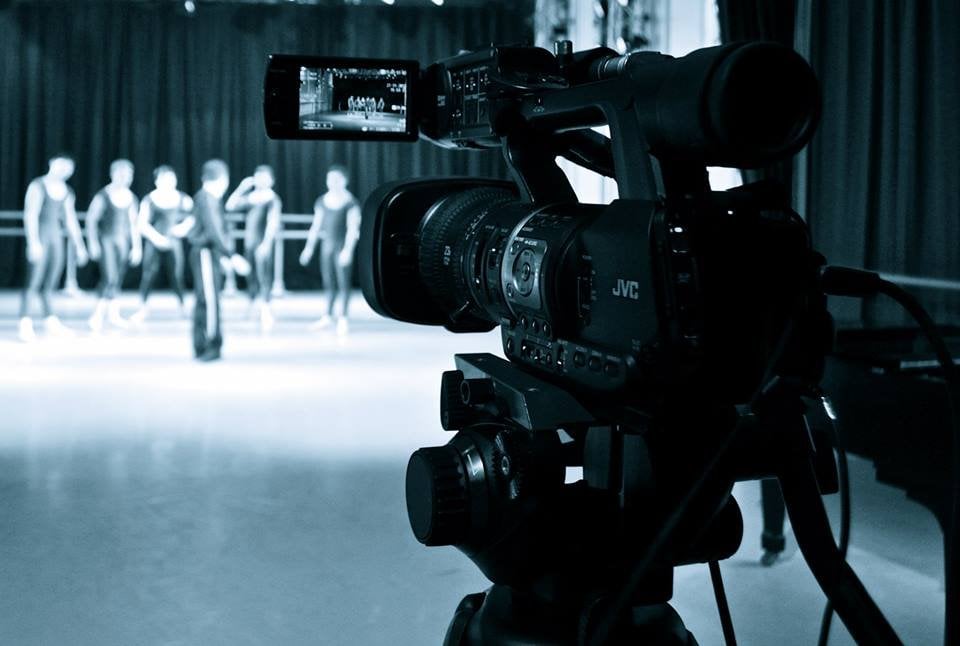
Filming at the English National Ballet School
Live streaming explored
Live streaming offers exciting opportunities for both small and large arts organisations in many different ways, believes Andre Portasio.
Live stream technologies are revolutionising established practices and creating new opportunities for innovation, creating discussion about the potential of the technology for arts and cultural organisations. The most important aspect of the technology is the distance and speed digital materials can travel (depending on content, platform and marketing). Organisations operating at local, regional or national level have the potential to gain almost instant global attention. This in turn breaks all barriers of locality and provides organisations with the opportunity to engage with audiences at a global level.
What makes live stream technologies even more appealing and in some respects more effective than pre-recorded content is the live element of the technology. Some critics may argue that digital content can never emulate or replace live performance, but if the technology is used in the right context and format, live stream offers viewers the ability to engage and interact with content in a way that they would never have done otherwise. The technology is diverse in the way it can be explored − users can share content, make comments, create debates and even influence the outcome − and thereby more appealing than any other format currently in place. Live stream is there to enhance and add to existing models and practices rather than replace them. What is clear is that it provides opportunities for engagement and interaction that current audiences, especially younger generations, expect to be given, even if they may not choose to use it.
All departments within a cultural organisation can use it from the artistic and marketing departments to education and fundraising
Other benefits are brand awareness (digital presence) and in some cases new revenue streams. For the National Theatre, live streaming is sustainable and modestly profitable, so although it represents a new revenue stream, it is likely to be just as important for audience reach and brand-building. For smaller organisations the live stream experience is much more about experimenting with the creative process and producing a unique digital experience than it is about audience development.
Another benefit worth highlighting is the different ways in which the technology can be explored. All departments within a cultural organisation can use it from the artistic and marketing departments to education and fundraising. As a marketing tool you can explore behind the scenes, for pre- and post-performance talks or any other aspect of an organisation’s activities. It can support education projects through simulcast or interactive solutions, thereby breaking barriers of locality. Furthermore, considering the live component of the technology, fundraising activities can be pursued by appealing for donations during a live show.
When considering the scope and potential of global dissemination, live events can also become an attractive platform for sponsors. Existing video-hosting platforms offer free advertising solutions, which allow organisations to offer advertising space (a promo video) during a live event. Sponsorship deals in this instance can cover the cost of the initial investment and potentially diversify fundraising efforts.
The phenomenon of live streaming performances online and into cinemas has led in some cases to new works being specifically created. For example, Streetwise Opera, a performance group that works with homeless people, notes “Live streaming to cinemas has been a factor in our development of the first fully integrated live and film opera to be shown in a cinema.”
Case study: English National Ballet School
A recent UK-based experimental project involving the English National Ballet School in partnership with ArtStreaming TV was an opportunity to open doors and reveal the daily routine of the school to a wide audience. The 90-minute stream showed all aspects of ballet training. It was a fantastic way to showcase the school’s curriculum and convey the commitment and hard work of the students. Used as a marketing tool, it was aimed at prospective students and parents from around the globe. The event was tailored exclusively to an online audience with social media integration and a live chat feature providing a discussion platform. The outcome surpassed all initial expectations. 16,000 viewers accessed the event, the live chat feature and Twitter feed were populated way after the event had finished and ‘Likes’ on the Facebook page increased by over 15%. Most interestingly, the audiences spanned the UK, US, Romania, Canada, Australia, Brazil, South Africa, Japan, Argentina and Austria, with a total of 23 countries altogether. Considering the school only performs in the UK and mostly at small venues, this was its biggest and most international audience to date.
Andre Portasio is Executive Producer of ArtstreamingTV Ltd.
www.artstreamingtv.com
Join the Discussion
You must be logged in to post a comment.